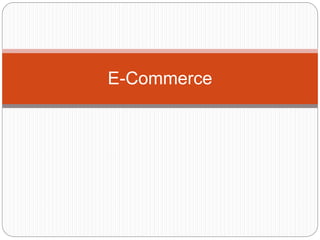E-commerce emerged in the 1970s with electronic fund transfers between large organizations and financial institutions. In the 1990s, the World Wide Web provided an easy platform for information publishing and online business. E-commerce involves the implementation of business transactions through computer networks and the internet. There are several types of e-commerce including business-to-consumer, business-to-business, and business-to-government. While e-commerce provides benefits like lower costs and a wider customer base, challenges include issues of trust, language, culture, infrastructure, and security.
































